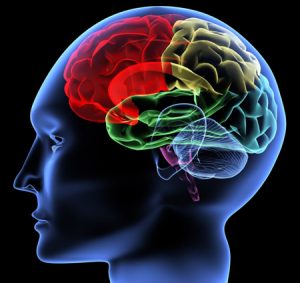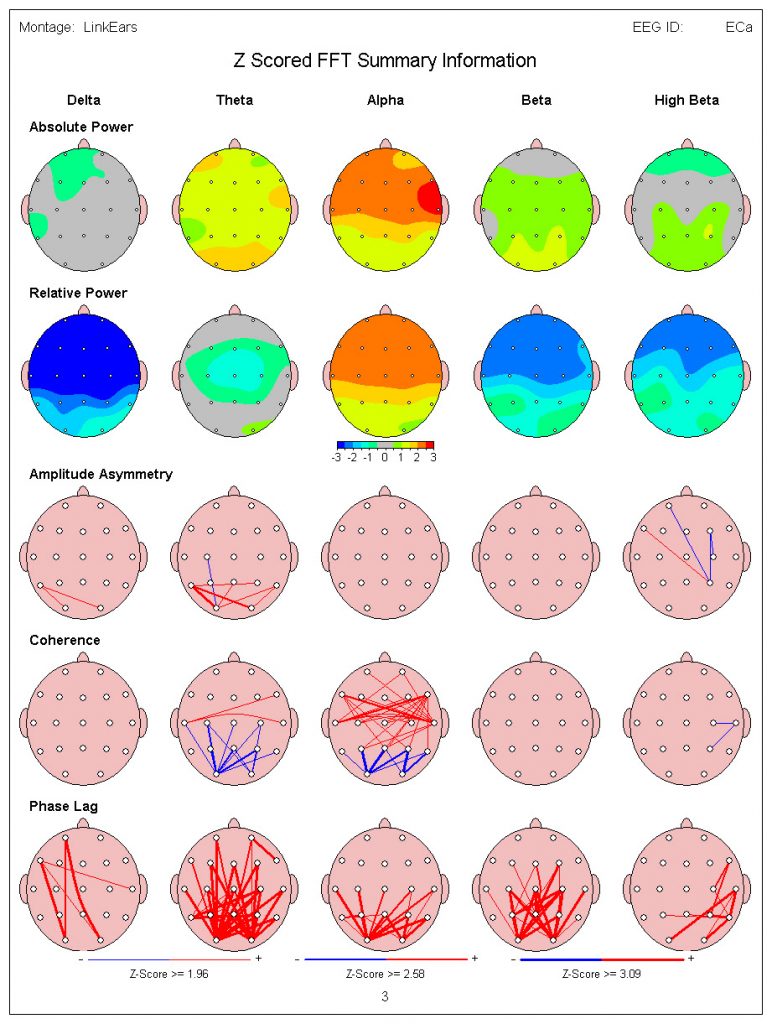What is Brain Mapping?
Conveniently located to serve the areas of Santa Monica, Venice, South Bay, Brentwood, Beverly Hills, Pasadena and all of Greater Los Angeles

The waveforms (brainwaves), which are produced by the brain, represent the rhythmic and repetitive neural activity in the central nervous system. Brainwave activity, when produced by large numbers of congregating brain cells working together, can be observed on an electroencephalogram and further analyzed using a method of QEEG analysis called neurometrics.
Contents
What is Neurometrics?
Neurometrics is the science of measuring the organization of the brain’s electrical activity which is represented in brainwave patterns.
Various components of the brainwave, such as the amplitude of power, ratios of power, coherence, and phase, all reveal the functional organization or disorganization of the brain’s electrical activity.
Each of these components reveals variations in brain function which can be associated with different types of brain-based functions such as attention and concentration as well as conditions and/or brain diseases. The brainwave activity reflects both cortical and subcortical functioning that, when analyzed, can become very useful for both diagnosing and treating a variety of problems.
Brain mapping allows us to obtain valuable information about brainwave patterns and interactions between the different parts of the brain.
About Brain Wave Frequencies
An important aspect of brainwave functions are the brainwave frequencies. These frequencies can be associated with psychological processes and states. Some brainwaves are slow, others are medium, and others are quite fast. We define brainwaves as EEG bands.
The most common EEG bands that are analyzed in the brain map are delta, theta, alpha, and beta. Beta waves can be further broken down into low beta, mid-beta, and high beta.
Every brain has some degree of each of these brainwaves present at various times during the day and night and in the various regions of our brains. The QEEG analysis helps to determine what brainwaves are present and to what degree in different areas of the brain during different tasks including in an ‘eyes open’ condition and an ‘eyes closed’ condition.
What Does Brain Mapping Treat?
- attention deficit disorders
- memory disorders
- executive function disorders
- obsessive-compulsive disorders
- auditory and visual processing disorders
- learning disabilities
Brain Mapping Techniques and Technology

These leads are in direct contact with the surface of the scalp where we can pick up the brainwave information. In order to optimize the amount of electrical activity gathered during the test for analysis, each electrode contained in the cap is prepared with a conductive gel. Once the cap is placed on the patient’s head, it is connected to a computer which has software that analyzes the brainwaves. It is important to measure the impedance or resistance of the electrical circuit of each sensor to optimize the electrical information flowing through the scalp into the lead. Low impedance is the desired goal in order to obtain a good measure of the brain’s electrical activity. No electrical energy is put into the patient’s head at any time during the test.
The computerized analysis of the raw EEG data involves an examination of a variety of parameters. These include but are not limited to the frequency distribution, the amplitude of the signals, the locus of the phenomena in the brain, the wave shapes, the symmetry of voltage, and the regulation of voltage and frequency.
Segments of the raw EEG data collected in the brain map are analyzed and measured by the software and are presented as numbers and statistical brain maps. These maps are topographic and represent the surface of the skull. The different lead sites where information was recorded are represented on the topographic map. These lead sites correspond to different areas of the brain which are responsible for different brain functions. In order to increase the clinical value and significance of the QEEG, a normative database is used. This database is used to compare an individual to a normative population to determine and quantify the degree to which an individual varies from “normal.”

The treatment that uses the same technology as the QEEG is called neurofeedback, Neurotherapy or biofeedback. The QEEG provides the information required to implement neurofeedback training to retrain specific areas of the brain based on the location of deficits and frequency bands which need to be trained. This is achieved through either visual or auditory feedback which can be in the form of brain games, movies, or other brain gym activities. Neurofeedback is essentially a form of feedback mediated cognitive behavioral therapy.
Schedule a Consultation
At Neurozone Inc, we offer complimentary consultations! Please contact our office today and schedule a consultation with Erin D. Badour, MS to learn more about our brain mapping treatments and how we can help you improve your overall quality of life. Call us or click here to request an appointment, we look forward to meeting you!




